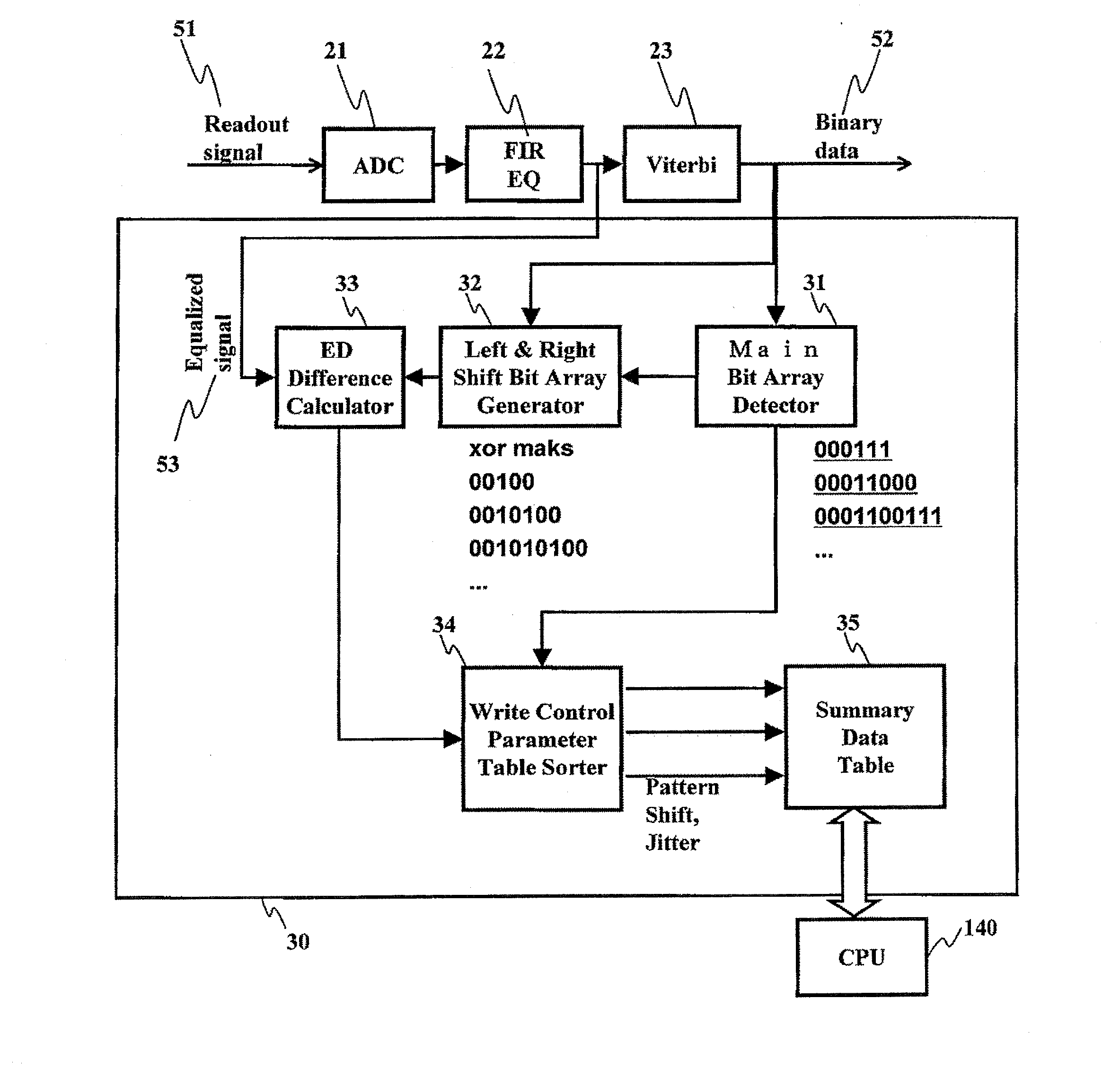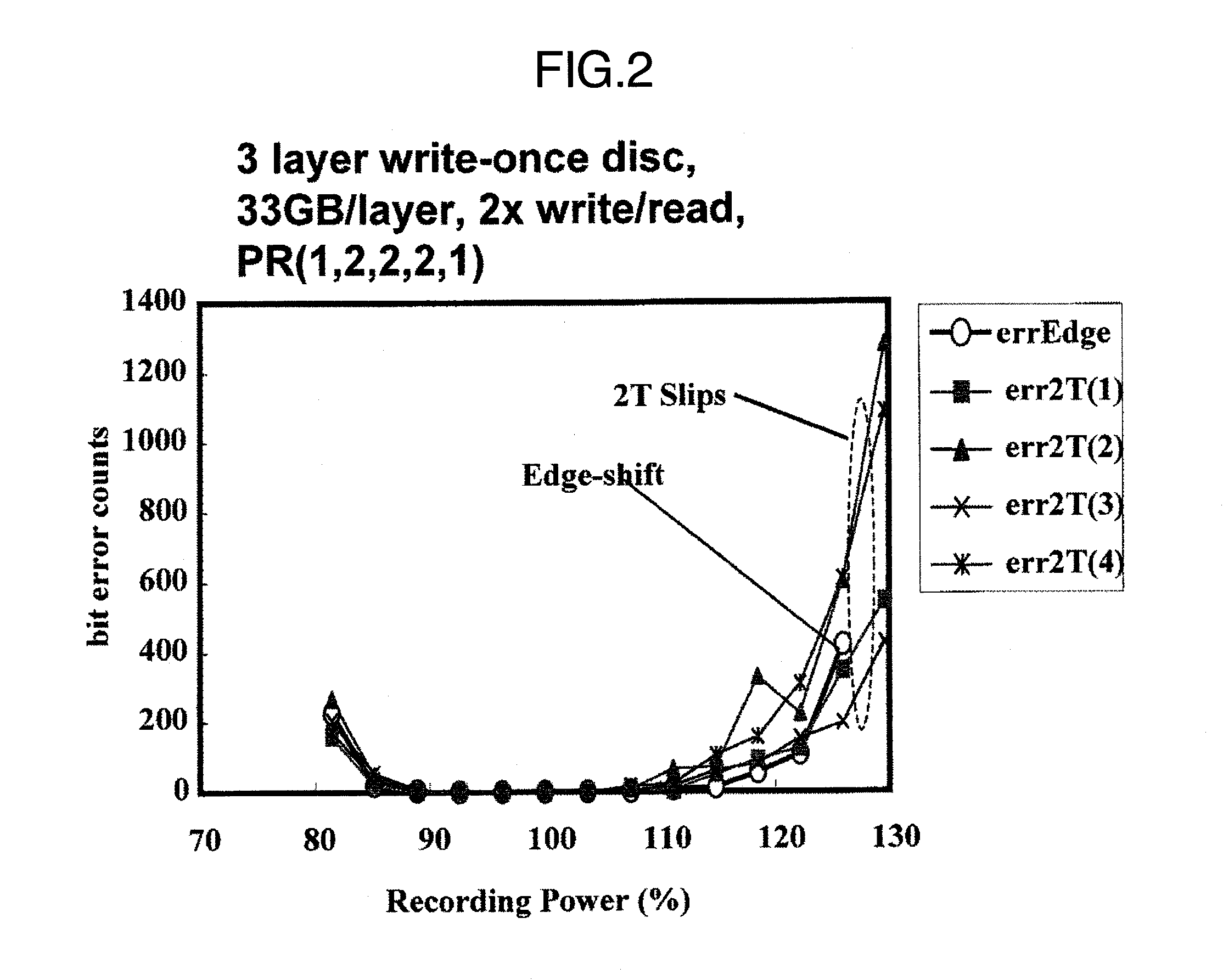Adjusting Method For Recording Condition And Optical Disc Device
a technology of optical disc and recording condition, which is applied in the field of adjustment method of recording condition and optical disc device, can solve the problems of large bit error or byte error, and achieve the effect of reducing the circuitry used in this invention
- Summary
- Abstract
- Description
- Claims
- Application Information
AI Technical Summary
Benefits of technology
Problems solved by technology
Method used
Image
Examples
Embodiment Construction
[0139]The adjusting method for recording condition and the optical disc device according to this invention will now be described by way of embodiment in reference to the attached drawings.
[0140]FIG. 23 is another embodiment of the table listing main bit arrays for edge evaluation according to this invention. The listed main bit arrays are for the case where N2T is equal to 3. There are 20 main bit arrays listed in total. In each main bit array, the underlined bit corresponds to an interested edge. The main bit arrays No. 1˜12 are the same as those listed in the table shown in FIG. 18. The main bit arrays No. 13˜20 correspond to the case where the continuous 2T count is 3. As described above, there is only one evaluation bit array that is the secondary likelihood bit array, among main bit arrays listed in FIG. 15 or FIG. 16. Accordingly, even in case of such a binarized bit array with N2T=3 as “0000011001100”, the quality of reproduced signal is evaluated by regarding the bit array “...
PUM
| Property | Measurement | Unit |
|---|---|---|
| wave length | aaaaa | aaaaa |
| thickness | aaaaa | aaaaa |
| width | aaaaa | aaaaa |
Abstract
Description
Claims
Application Information
 Login to View More
Login to View More - R&D
- Intellectual Property
- Life Sciences
- Materials
- Tech Scout
- Unparalleled Data Quality
- Higher Quality Content
- 60% Fewer Hallucinations
Browse by: Latest US Patents, China's latest patents, Technical Efficacy Thesaurus, Application Domain, Technology Topic, Popular Technical Reports.
© 2025 PatSnap. All rights reserved.Legal|Privacy policy|Modern Slavery Act Transparency Statement|Sitemap|About US| Contact US: help@patsnap.com



